This is another blog in which I write about a topic in an authoritative fashion creating the impression that I might know something. Whereas this might be true, it is not guaranteed.
While looking at antiques in Denham Springs, LA, I came across this failed chest:
I call it a glue failure because the dovetails are still in tact. The glue failed leading to a joint failure. With dovetails, there is a goodly amount of glue surface. It should have held. Two main reasons for dovetail joints are the mechanical strength of the joint and the increased glue surface. (And some people think they look really cool.) A butt joint (end grain to long grain) has neither.
Roy Underhill has tool chest on which he says the dovetails are wrong. That’s so judgmental. When he says wrong, he means that the pins are on the sides and the tails are on the end panels. Let me illustrate.
My theory is that it all depends on the whether you are interested in keeping the ends on or the sides attached. This might seem to be much of a difference but think about it this way. If you have a heavy tool chest with handles that you carry often, you are interested in keeping the ends on. Carrying the chest the buts an enormous stress on the end panels. With that in mind, the following is as close to wrong as I am willing to admit:
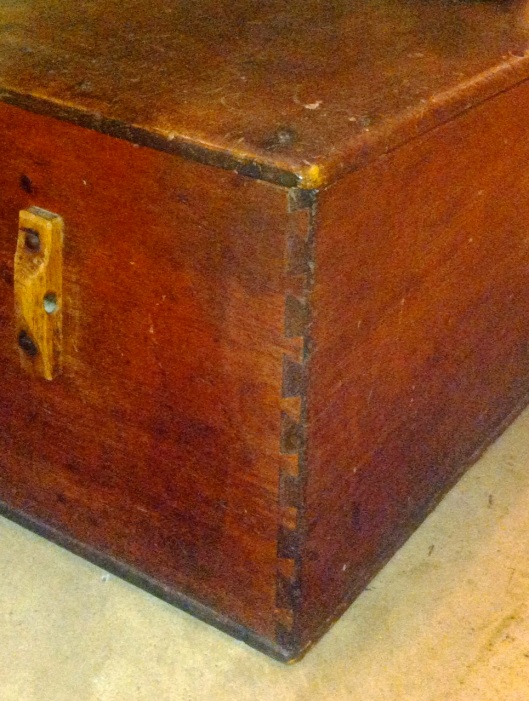
Here you see that extreme forces on the end panel can pull the end free of the sides. The dovetails provide no mechanical strength.
Now consider the mule chest. No handles on the end and not typically carried. You are more interested in the static load. More stress on the sides and the back with the stress from the lid being opened. The dovetails should look something like this:
Not being a restorer, I don’t see all that many dovetail failures. I do see lots of dovetails of all varieties and fashions. We have been told they all violate norms and should have failed. Got your thin ones:
Or the 45° vulture tails:
Click HERE to see the original set of 473 dovetail pictures. It’s where this started.
And HERE to see another 409.

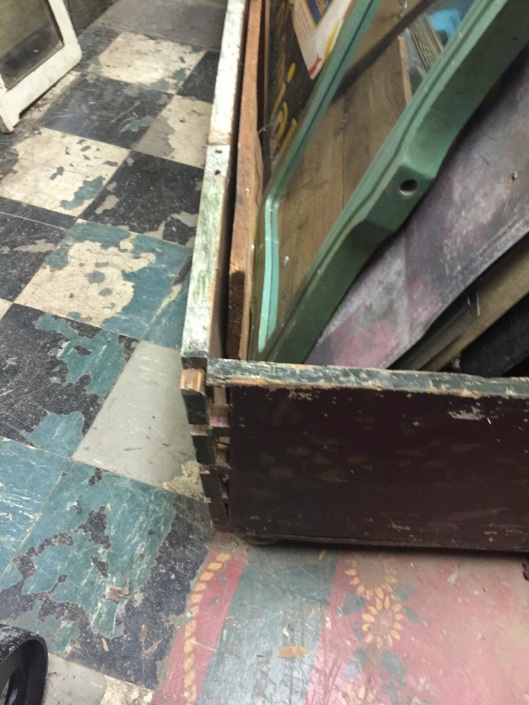
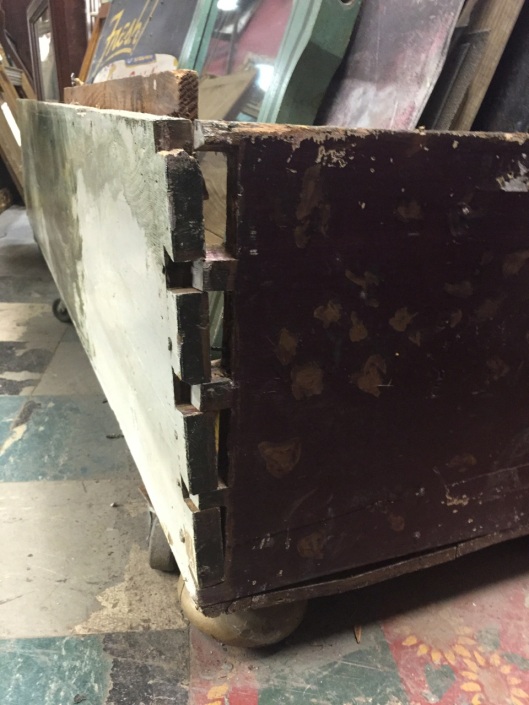
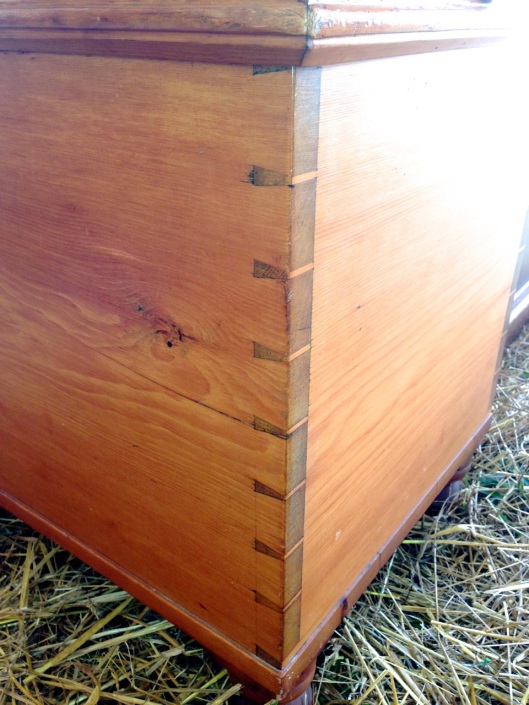
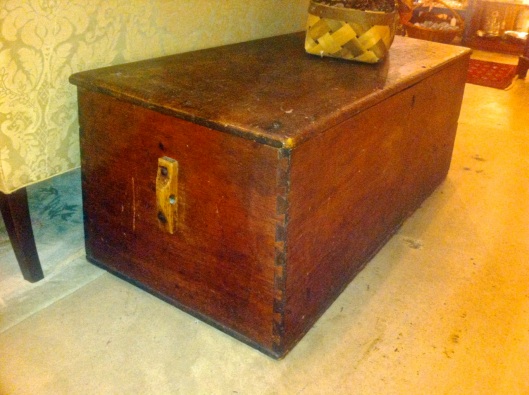

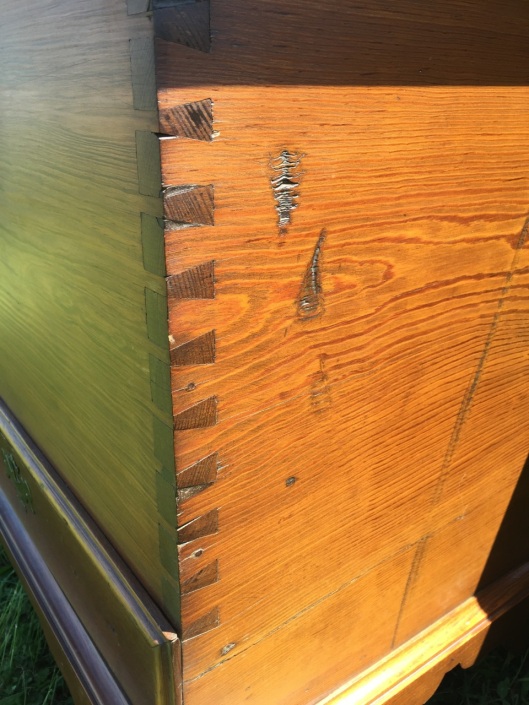
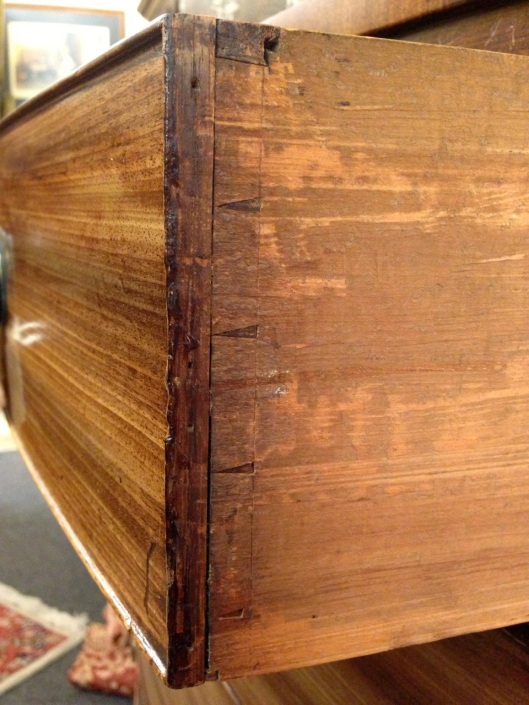
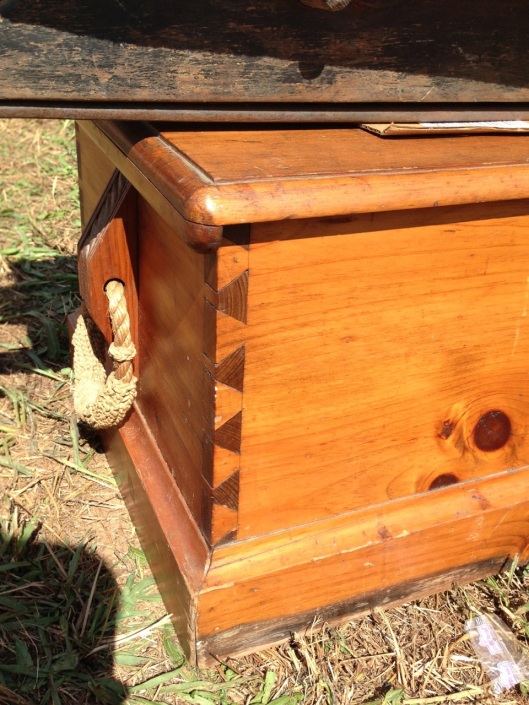
Dovetail location only matters when there will be significant forces pushing outward, as you say. In that case the location is dictated by which has the most chance of blowout: the sides or the front/back. For most furniture it makes no difference and is merely an aesthetic decision.
Mark,
Why is it called a mule chest?
Michelle
A mule chest is a blanket chest with a hinged lid to which drawers are added below. The reason for the name is not definitively know but there is speculation. One theory explains that slippers, called mules in the 17th and 18th century, were kept in the drawers of the chest.
Another theory is that the chest was named after the mule, the mule being a hybrid of a horse and donkey.The mule chest is a combination of a blanket chest and a chest of drawers.
Just do a web search of mule chest and have some fun exploring.